ORISSA
![]()
Orissa,
the land of Oriyas, is the only state that showcases India's wealth in its splendid temples, shrines, glistening golden beaches, shimmering waterfalls, luxuriant forests, wooded hills, beautiful wild life, crowing architecture, sculptures and other diverse arts and crafts.Lying on the eastern coast of India, Orissa, Kalinga or Utkal of ancient times, with an area of over 1.55 lakh sq. km is in the tropical zone. It is also known as Land of Lord Jagannath.
In the east there is the dazzling sea of Bay of Bengal, and the entire region is covered with heavily forested blue hued hills of the Eastern Ghats. Her rural serenity, great forestlands inhibiting all sorts of wildlife, gentle coastline, deep valleys of the Mahanadi the Brahmani and the Bansadhara, lush paddy fields and green forests constitute a unique experience. Famous Chilika lake with two beautiful islands - Parikud and Malud, is home to thousands of migratory birds from Siberia and many other lands. Gushing waterfalls, hundreds of feet high roar down with a thunder in sanctuaries and forestlands.

The Golden Triangle of Bhubaneshwar, the cathedral city of India, Puri, a coastal town and beach resort, and Konark famous for the great temple of Sun God, attracts the largest number of visitors.
Art and crafts, temples and sanctuaries, beaches and waterfalls, hot springs and alluring lakes, fascinating vegetation and wildlife, various tribes make Orissa beautifully innervating, visually fascinating, charming, colourful and vibrant.
History of Orissa:
Its past is linked to the fortunes of Kalinga of which it was once a part. After the terrible war between Ashoka and Kalinga, the dreadful loss of many lives made Ashoka give up sword and preach the message of Love. Buddhism and Jainism alternately held sway in Orissa, which was spread by Ashoka. After independence, Orissa became a state of India in 1936. Orissa's history dates back to the days of the Mahabharata. Rock edicts of Emperor Ashoka are found in the State. The impact of the invasion of the Guptas is seen in the early temples of Bhubaneshwar. The Matharas ruled Orissa from the later half of the 4th century AD.
Capital of Orissa:
Bhubaneshwar,
the capital of Orissa is popularly known as the 'Cathedral City'. It forms an integral link in the Golden Triangle that incorporates the holy city of Puri and Konark, for the tourists that flock to pay their homage to the religious, cultural and natural wonders that abound here.The striking features of the city are the numerous temples and shrines that seem to be all around you. The temples have after all stood testimony to the area's history, which spans 25 centuries. The Lingaraj, the Parsurameswar, the Mukteswar and the Rajarani temples are unique in themselves, not only in their architectural beauty but also in the wonderful sculptures that enhance their presence. Though the Lingaraj is closed to non-Hindus, it can be viewed from the viewing platform constructed alongside.
The State Museum of Bhubaneshwar offers an excellent selection of archaeological artifacts, weapons and local arts and crafts and insights into Orissa's natural and tribal history. The museum has world's largest collection of palm -leaf paintings.
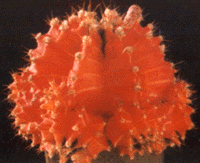
The Regional Plant Resource Center (RPRC) has about 500 acres of plantations, tissue culture and experimental laboratory and a huge lake where migratory birds make their home. The two unique features of RPRC are its status for housing the largest rose garden in the country (an area of 20 acres) and having the largest collection of cacti (550) in Asia. Bhubaneshwar is a shopper's delight. Saris woven by the master weavers in silk and cotton are available in the private shops and government emporia.
The twin hills of Khandagiri & Udayagiri, 8 km from Bhubaneshwar, served as the site of an ancient Jain monastery, which was carved into cave like chambers in the face of the hill. Dating back to the 2nd century BC, some of the caves have beautiful carvings. The Rani Gumpha (Queen's Cave), one of the largest and double- storied is ornately embellished with beautiful carvings. In the Hathi Gumpha (Elephant Cave), King Kharavela has carved out the chronicles of his reign. Then there is Dhauligiri, the place where battle of Kalinga took place and Emperor Ashoka full of remorse renounced his bloodthirsty campaign and turned to Buddhism. The edicts are a living testimony to the King's change of heart.
Another striking place is NandanKanan zoo, which is the World's No.1 White Tiger safari and Largest Lion Safari in India in the outskirts of Bhubaneshwar.
Culture in Orissa:
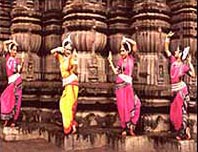
Another expression of Oriya culture is Odissi, one of the finest forms of Indian classical dance and the traditional dance form of Orissa .It owes its origin to the temple dances of the devadasis (temple dancers). Evolved out of spiritual consciousness, it formed an essential part of the ritualistic services in the important shrines of Orissa. Devotional in spirit, it is marked for its elaborate grace and lyrical charm, revealed through rounded movements. There are other Folk and tribal dances, which add to the beauty of Oriya Culture. About 30 forms of dance are found in Orissa. The main ones are: Odissi, Animal Mask Dance, Kathi Nach, Dalkhai Dance, Chhau Dance, Daskathiya, Ghanta Patua, Danda Nata, BaunsaRani,Sankhabahana.
Handicrafts of Orissa:
Orissa has a distinct tradition of painting, architecture, sculpture, splendid music and dance
.There are unique and exquisite handicrafts, made by those fingers whose forerunners had with such dexterity and skill created the magnificent Orissa Temples. The handicrafts of Orissa include silver filigree, horn work, folk paintings (Patta-Chitras), applique work, stoneware, silk and cotton handloom etc.
The Applique work from Pipli is world wide famous. Coloured cloth, after being cut and shaped into the forms of birds, animals, flowers, leaves, and other decorative motifs is stitched onto a cloth piece designed as a wall hanging, garden or beach umbrella, a lamp shade and other utility items.

The Patta-Chitras are paintings done on fabric with natural colours of flowers and vegetables. The paper on which Patta-Chitras are painted is specially prepared using a paste made of tamarind seeds and powdered chalk. This makes it parchment-tough. Using delicate brushes, the fine outlines of the painting are drawn. These, are then, filled in with colours to create pictures from the epics like Mahabharata and Ramayana. Only those inherited from forefathers are still doing them at Raghurajpur.
In Orissa ,a unique type of art form is developed at Puri i.e. Sand Art . To carve a sand sculpture , the raw material is the only clean and fine-grained sand mixed with water . With the help of this type of sand and with the blessings of God and by the magic of fingers, an artist can carve a beautiful and attractive sculpture on the beach.
The highly refined, delicate craft of Tarkashi or Silver Filigree work is practiced in Cuttack. Silver is beaten and drawn into fine wires and foils, which are then joined together to form articles-generally ornaments-of stirring beauty.
Then there is the famous silk and cotton handloom of Berhampur and Sambalpur, which are unique in themselves.
Pictures of Handicrafts of Orissa
Festivals of Orissa:
Orissa is not only a land of temples, beaches, waterfalls and arts but also a land of colourful fairs and festivals. Our festivals are as many as the days in a year, with a difference and a speciality of its own. The main ones are :
Konark Dance Festival
(Magha Saptami)- Especially on this day the Sun God at Konark is worshipped. It is the most colourful and popular festival attended by thousands of people from different parts of the world. The festival that takes place for 5 days provides a platform for both to the performing artiste and the dance critics in appreciating the essence of various classical dance forms of the country. The stage for the dancing event glows in pristine glory of much admired Odissi, Bharat Natyam, Manipuri, Kathak and Chhau Dance - a lavish feast for the eyes and ears.
Rath -Yatra - Also known as "Car Festival" where the three wooden deities of lord 'Jagannatha', with his brother 'Balbhadra' & sister 'Devi Subhadra' are brought out of the main temple and taken to Gundicha temple for a week's visit in three beautifully decorated chariots drawn by multitude of devotees. Around lakhs of Pilgrims attend this occasion to have a glimpse of their Lord and also to pull the chariot.
Durga Puja
- This festival is observed for 10 days to honour Maa Durga for her victory of good over evil. Massive images of Maa Durga are installed on decorative Pandals and Puja is performed. After Dashami all the idols are then taken in procession for immersion in the river. Many people come to the city from villages to watch the festival. Even big images of Ravana are burnt to mark the victory of Lord Ram over Ravana.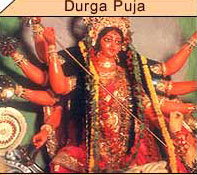
Diwali
- The festival of Lamps is celebrated similar to North Indians by burning crackers, lighting Diyas and worshipping Goddess Lakshmi. But with the exception that before burning crackers, a Shradh for forefathers is performed and an offering of Diyas is given to them. The members of a family light a sugarcane stick and say "Oh! The ancestors come in the darkness and go in the light."Kumar Purnima
- This autumn festival called as Sharat Purnima is one of the most popular and important festivals of Orissa. There is no particular ritual for the God, instead the Moon is worshipped and special food is offered to it. This day is also observed as the birthday of Lakshmi, the Goddess of wealth. Therefore, many people worship the Goddess at their homes, wear new clothes and keep themselves awake by playing Pasha (Chess), cards and other indoor games.Lakshmi Puja
- The whole month of Margashira is spent in worshipping the Goddess Lakshmi. All the rituals connected with the festival "Manabasa Gurubara" or "Lakshmi Puja" is done by housewives. On each Thursday of the month the floors of houses are decorated with beautiful floral designs drawn with rice-powder mixed with water. This is called 'Jhoti'. Footmarks are painted from the doorstep to the place of worship as if Goddess Lakshmi has entered the house. The roofs are decorated with flower garlands and festoon woven out of paddy stalks. Different varieties of rice-cakes and 'Kheer' are prepared in every household and are offered to the deity and then taken by all.Raja Sankranti
- (Swing festival) or "Mithuna Sankranti" is the first day of the month of 'Ashadha' from, which the season of rains starts. It inaugurates and welcomes the agricultural year all over Orissa, which marks, through biological symbolism, the moistening of the summer parched soil with the first showers of the monsoon, thus making it ready for productivity. To celebrate the advent of monsoon, the joyous festival is arranged for three days by the villagers. During these days Mother Earth is given complete rest and similarly young girls are. They don't walk bare-foot do not scratch the earth, do not grind, do not tear anything apart, do not cut anything and do not cook. During all the three consecutive days they are seen in the best of dresses and decorations, eating cakes and rich food at the houses of friends and relatives, spending long cheery hours, moving up and down on swings, rending the village sky with their merry songs.
Karthik Purnima
- The whole month of 'Karthik' is considered to be the most sacred among all the twelve months of the year. During this month all the pious Hindus refrain from eating non-veg. In the olden days, Sea traders use to sail off for trade and commerce on this day to countries like Java ,Sumatra, Borneo which are known as Indonesia, Malayasia in the modern days , and their family members bid them off with loads of wishes. Now in memory of the tradition, people float tiny boats made out of cork and Coloured paper in rivers and sea.. This is called "BoitaBandana".
Orissa "A Rich Experience to Cherish":
Temples-
Orissa is a true land of temples. The temples of Orissa exhibit a majestic grandeur. Temples in Bhubaneshwar alone can count upto 7000 . But the main tourist attractions are the ones in Golden Triangle.
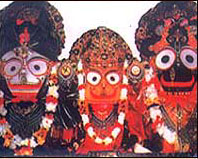
Puri is one of the most popular pilgrimage destinations in India. The Jagannath Temple, known as the White Pagoda is one of the four Dhamas, after Badrinath, Dwarka and Rameshwaram.
An Orissan temple (deul) usually consists of a sanctum, one or several front porches (jagamohana) usually with pyramidal roofs, a dancing hall (natya mandir) and a hall of offerings (bhog mandir). The main Deities in the temple are Lord Jagannatha, His brother, BalaBhadra, and His sister, Lady Subhadra. Lord Jagannatha is another name for Lord Krishna. This temple is said to have the largest kitchen in the world and feeds thousands of devotees every day.Konark is known for its temple of Lord Surya, the Sun God. It is situated on the seashore. This impressive temple resembles a huge chariot with 24 huge wheels being pulled by seven horses. This majestic pile of oxidizing sandstone is considered to be the apogee of Orissan architecture and one of the finest religious buildings anywhere in the world. Sailors once called this temple the Black Pagoda because it was supposed to draw ships into the shore and cause shipwrecks.
Lingaraj is the famous temple of Lord Shiva. During Maha Shivratri, the Mahadeepa (sacred lamp) is taken to the top of the temple and kept burning throughout the night. This symbolizes the eternal light of wisdom shown by Lord to his devotees.
Wildlife -


Simlipal is one of the 18 tiger reserves of India with 2,750 sq. kms of lush grassland and Sal forests. It has an awesome beauty: the water falls, tribal settlements and mountain peaks add grace to the park. Resting Tiger is the main attraction of Simlipal. It deserves to be one of eastern India's major attractions. Elephants, deer, leopards, gaur bison, sloth bears, reptiles, langurs, crocodiles and more than 200 species of bird life can be found. The Grey Hornbill, Indian Pied Hornbill, Malabar Pied Hornbill and Indian Trogon are also found in the reserve. Apart from the large number of mammals and bird species, the park is the abode for snakes and turtles.

NandanKanan zoo is another abode for endangered species such as the Asiatic lion, three Indian crocodiles, Sangal lion tailed macaque, Nilgiri langur, Indian pangolin, mouse deer and countless birds, reptiles and fish have been breeding successfully at NandanKanan. Some of the other attractions of NandanKanan are the 34aquaria, which are home to a large variety of fresh water fishes. The Reptile park's cave like entrance is guarded by a life-size tyrannosaurus inside numerous species of crocodiles, lizards, turtles and snakes share the park with natural ease.67 Kinds of Mammals, 18 Varieties of Reptiles, 81 Species of Birds coexist in the deeply forest boundary. The zoo enjoys an excellent reputation, internationally, for the first one to successfully breed black Panthers, Gharial crocodiles and White tigers in captivity. It is the only place where White tigers are found.
The Bhitar Kanika Sanctuary, located slightly away from the Gahirmatha Sanctuary, and in the second largest mangrove forest in the country, has protected the estuarine crocodile and its habitat since 1975. The mangroves support a large variety of bird life such as storks, egrets, white ibis, six species of Kingfishers, as well as migratory ducks from Siberia and Hungary. From far off South America Sea Turtles come here to lay eggs.
Dams -
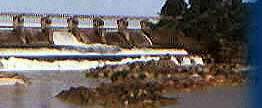
Hirakud Dam the longest dam in the world and the largest dam made of earth is built on the river Mahanadi. Hirakud is an engineering marvel as well as a stunning site. From horizon to horizon, the reservoir forms the largest artificial lake in Asia with an area of 746 sq km and a shoreline of over 640 km. This Dam generates about 120M Watts of Hydro electricity.
Beaches
-Puri Beach is one of the finest Sea Beaches of the world. Washed by the waters of the colossal Bay of Bengal, the sunset and sunrise at Puri are worth watching. They are perhaps the only walkable beaches on the eastern coastline that are carpeted with clean white sand.
Konark Beach is another beautiful beach situated near Konark.
Gopalpur on Sea is one of the most pristine beaches of Orissa. The pleasures of the Blue Beach and the Blue Bay of her backwaters are worth mentioning.
Chandipur Beach offers gorgeous views of dynamic seascapes and timeless dawns. It has a speciality that the seawater withdraws to a distance of about 5 Kms everyday giving the tourists an ultimate pleasure of walking into its depths without fear.
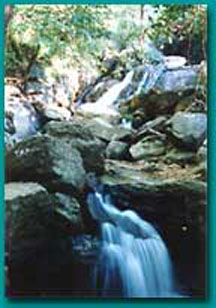
Water
Falls -There are around eighteen known waterfalls in Orissa of which worth mentioning ones are - Khandadhar, where the beaming rainbow can be seen forming on the waters. Then there is Bada and Chota Ghagra in the North Orissa. And also Barehipani and Joranda falls in the Simlipal area add more to the beauty of the sanctuary.
Hot Springs -
Taptapani is a natural Hot Sulphur Spring near a small settlement perched in the middle of tribal inhabited hills in Ganjam District. The hot water is channeled to a nearby pond to facilitate bathing. This spring is a great curative for skin diseases.
Atri is another Hot Sulphur Spring near Bhubaneshwar. It is a holy place and a bath in the spring water can cure many of the skin diseases.
Lakes -
Chilika Lake, queen of beauty, is the largest Brackish water lake in Asia. These shallow waters enclose an immense area of marshes, lowlands, and islands. There are more than 160 varieties of fish, and, in the winter season (from November through March), the area is home to thousands of migratory birds from Siberia and other distant lands as well. The surrounding hills and sandy stretches abound in cheetals, black bucks, monkeys, fishing cats, mongoose, and porcupines. At the channel meeting the sea, dolphins can be seen jesting playfully. Snakes, turtles and lizards inhabit the surrounding beach area and wooded undergrowth.
A real paradise for bird watchers, Chilika offers visitors a spectacular display of its colourful avian charms in a thousand different hues.
Tribal Orissa -
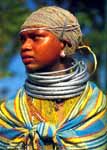
Orissa is one of the states of India, which can boast of a vast tribal population belonging to diverse races and culture. The majority of this population resides in the dense forests of Western Orissa. Around 62 tribes can be found out of which the important ones are Kondh, Koya, Gadaba, Paraja, Saora, Gond, Bhuyan, Bonda etc. Different tribes have distinctive cultures of their own. They have their unique forms of Dance and Arts. They have their peculiar marriage, funeral ceremonies and other customs, and its own level and limitations of social interaction with members of other castes and religious communities in the village society.
Seeing is believing and unless you get to see the beauty of Our Orissa you can never get the true essence of her exquisite beauty. It has not only the bounties of nature liberally sprinkled but also the marvels created by human hands in shape of Sculptures and other ancient monuments.
Amazing Seas, Temples, Lakes, Waterfalls, Wildlife, Monuments, Hotsprings, Tribals, Colourful Fairs & Festivals, Enchanting Dances and Rare Artistry, Orissa, a perfect blend of natural beauty and creativity, has it all.
![]()
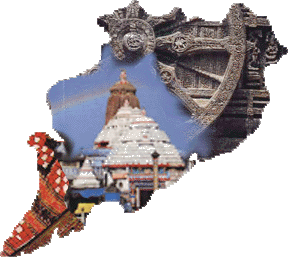
Page composed By
Sonali Panda
Sign my Guestbook